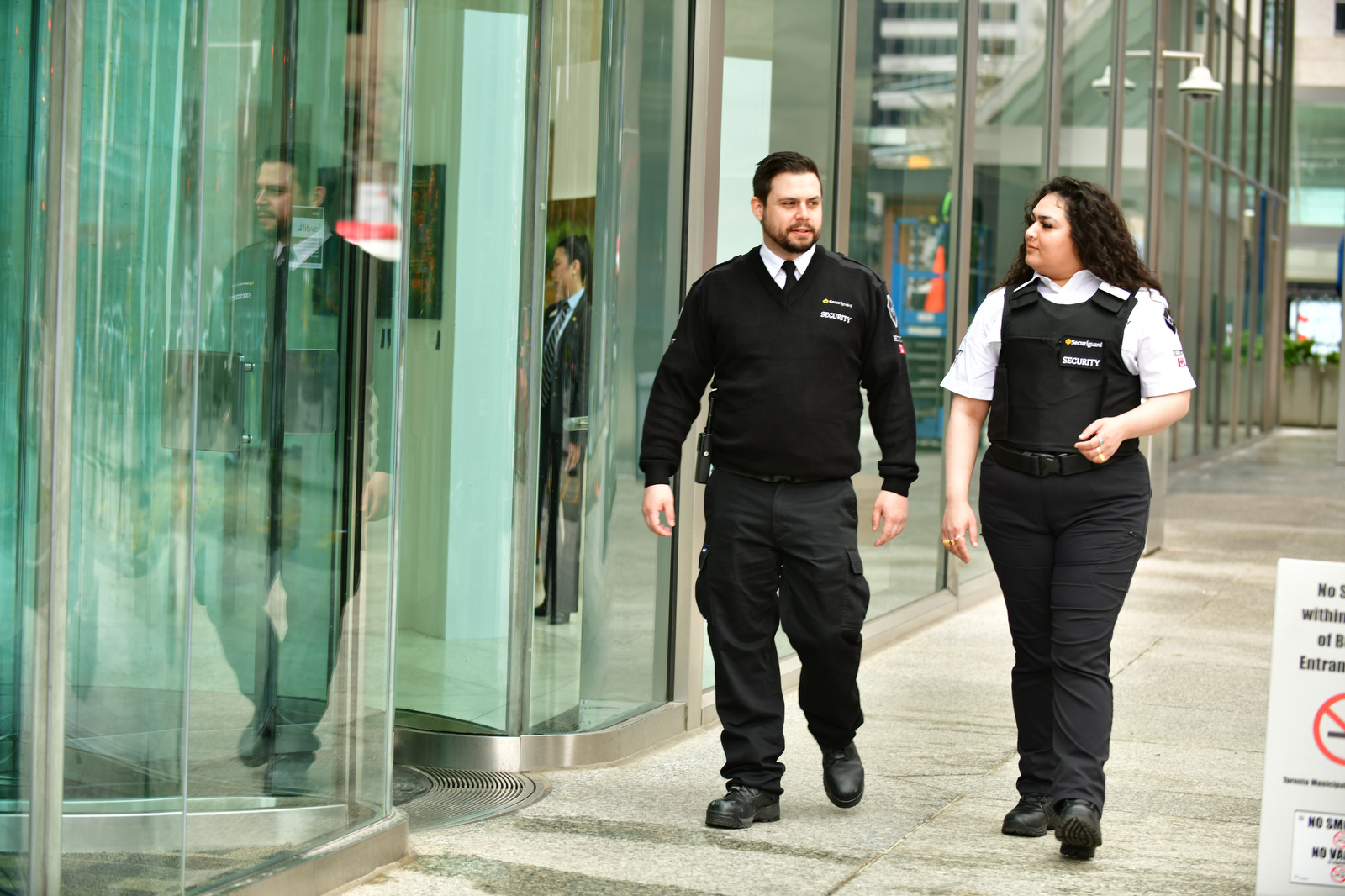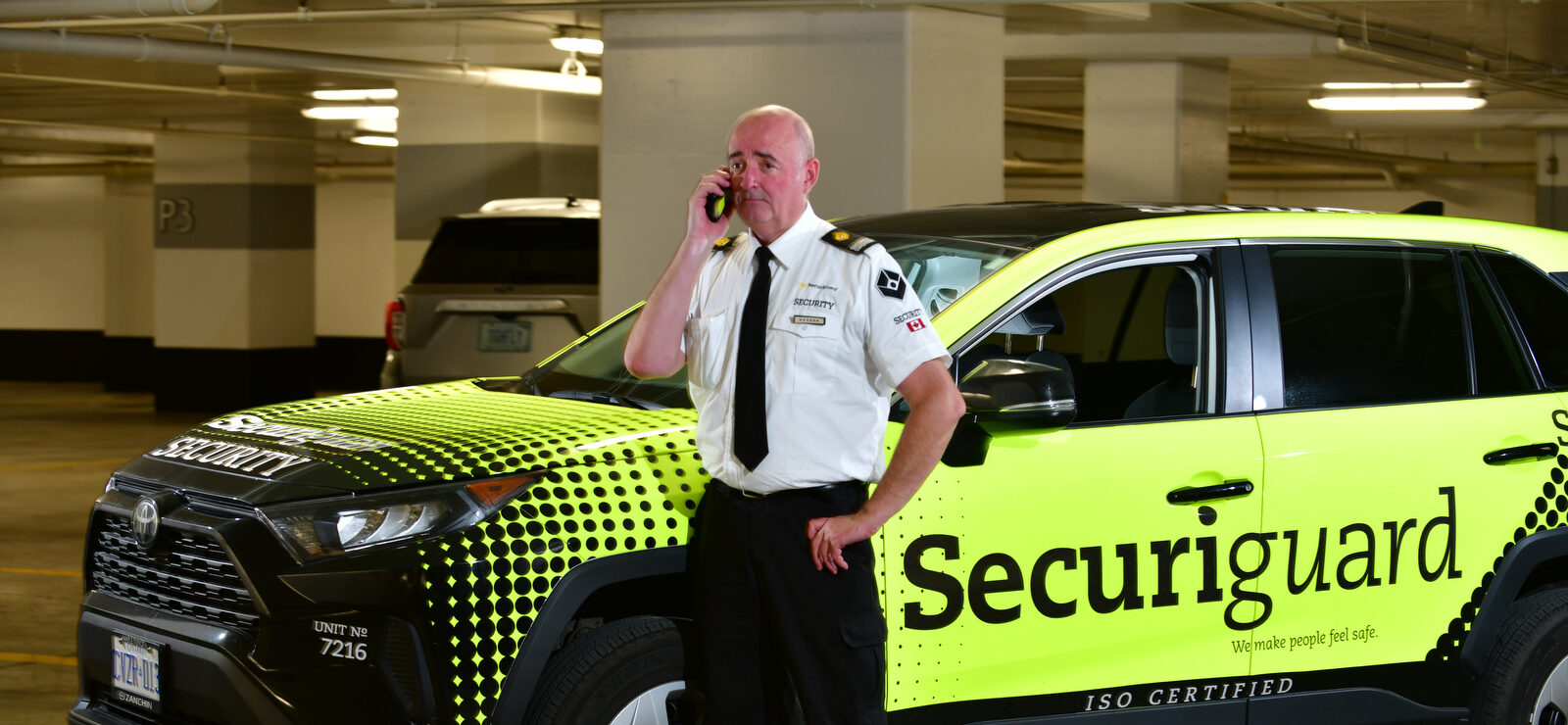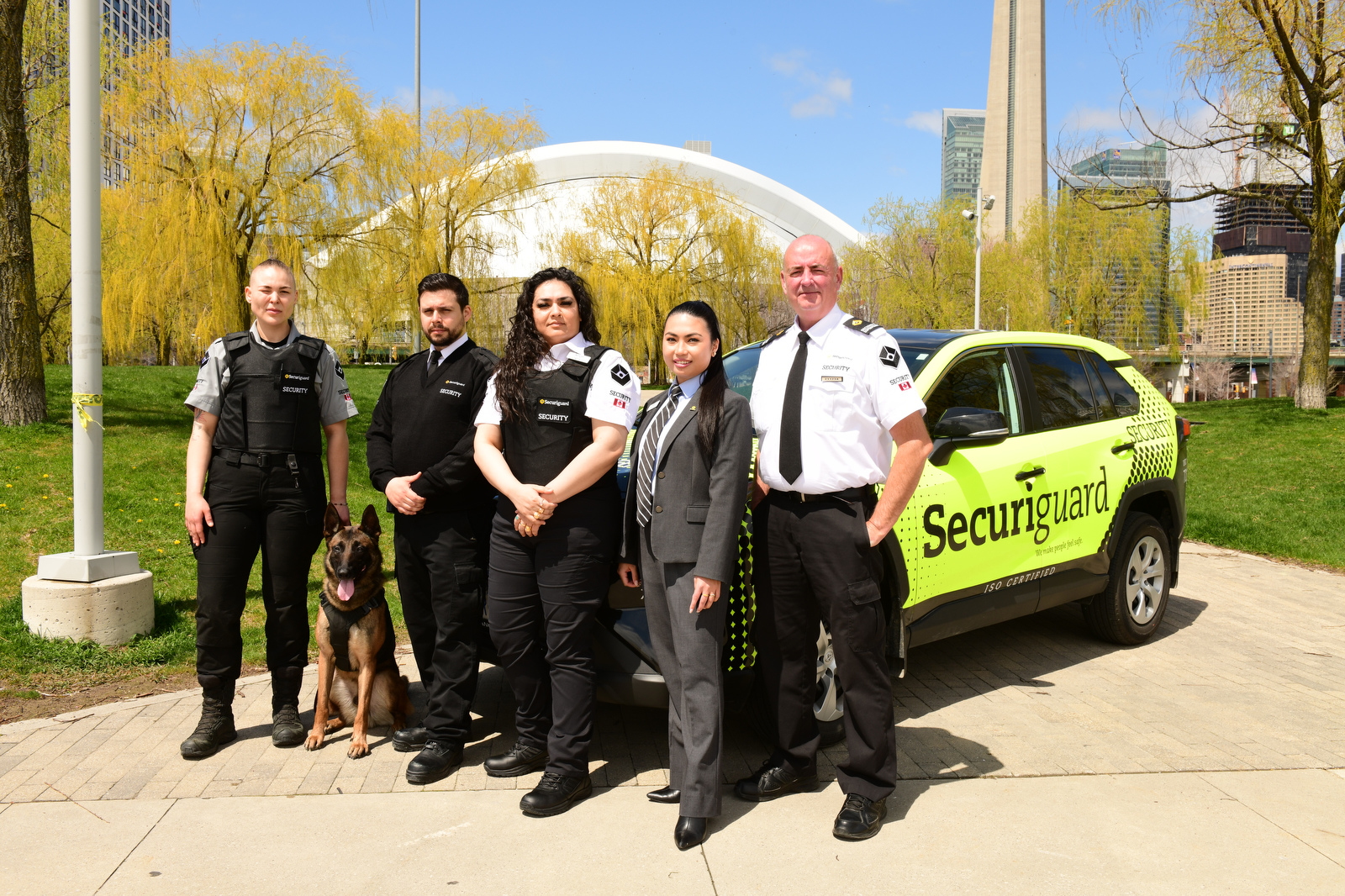Top 9 Questions Commercial Property Managers are Asking Their Security Providers
As a commercial property manager, are you confident that your building’s Safety and Security Plan addresses your most significant vulnerabilities and importantly – delivers clear value and a sense of safety and security to your tenants?
Securiguard Services has worked proudly over the past 5 decades to support our commercial property management clientele in the evaluation and improvement of existing plans. These enhancements allow commercial property managers to develop and implement robust strategies designed to minimize risk and identify vulnerabilities of their properties. We are pleased to share these nine questions that we recommend Commercial Property Managers discuss with their Security Providers.
1. Have you comprehensively identified all of your property risks and vulnerabilities?
When approaching the topic of safety and security, start with comprehensive review of each property to ensure that you have identified all potential vulnerabilities and associated risks. A professional security team will identify all hazard, risks and vulnerabilities that could impact your business operations, including important considerations for tenant needs. While this list varies by industry and building, below are examples of potential risks from a lack of preparation:
- Loss or damage of physical property, such as equipment
- Reputational loss or negative brand exposure
- Loss of revenue in the event of business interruption
- Extra business-related expenses
- Reductions in the value of your products or services after a loss
Your list must also include considerations of risks specific to members and key stakeholders frequenting your property. Examples include:
- Personnel safety
- The personal property of employees while on-site
- C Suite or threats against executive team members
- Direct and indirect losses through damaged reputation
While these lists aren’t exhaustive, they can provide a helpful reference for your security team to utilize while creating a comprehensive list of risks and objectives.
2. Have you considered the legal obligations and potential impacts to your business operations when formulating a risk mitigation strategy? Does it integrate with a business continuity and business resumption plan?
The actions taken to address security risks and vulnerabilities can often be difficult to implement due to the legal requirements from all stakeholders involved.
It may also have an adverse effect on your business’ operation in terms of overall experience.
A robust security program requires knowledge and system application across all team members involved in providing the security framework. This poses the question:
Are those responsible for implementing your safety and security protocols trained, equipped and capable?
This means ensuring that those responsible for handling daily security tasks are certified and prepared for undertaking your risk management framework.
Consider also their availability, as it plays a critical role in their ability to respond and deploy at a moment’s notice. Any delay, or false process can significantly hamper your property’s ability to provide its service and to return to normal business operations after an event
Is a clear authority framework established?
It’s crucial that a direct line of communication is formed between all stakeholders. Awareness ranging from: who is actively undertaking your security needs at any given moment, to who is required to be informed and consulted should any event arise, as well as who has the authority to determine the necessary requirements to take certain actions (escalating, de-escalating, communicating, informing, etc.). This framework importantly needs to integrate seamlessly between your service suppliers and the unique expectations of your tenants.

3. Are those who rely on you to manage response, aware of how they may fit into safety and security plans and expected outcomes?
A security program is managed most effectively with input from all stakeholders within an organization, including your tenants. Clarifying who is informed, responsible and accountable of the overall security plan is a necessary step to determining the correct process ahead of future events. This means mapping out key criteria for when and why each party should be communicated to.
Does your plan include redundancies for personnel, systems, equipment, business resumption and information?
Security planning requires a large degree of trust in the safety procedures provided. Generating trust means putting into place processes that offer opportunities to reaffirm information, systems and workflows at multiple levels, to ensure that correct procedures have been implemented properly.
Just as security personnel should have a clear authority framework established, it’s necessary for those in your team and those who rely on your team to be briefed with necessary information regularly to support the security plan.
Do you employ safety and security technology and systems effectively as a force multiplier?
The overall protective strength of any security plan is a product of the policies, processes, components, personnel and other systems in place used to minimize risk and decrease vulnerability.
Each component of the plan plays a role and further solidifies the security of the system. Common features of safety and security technology might include:
- Integrated Closed Circuit Television and Access Control Monitoring
- Control points for key areas of entry
- RFID or Bluetooth Geo-Location Activity Logging
- Digital reporting tied to analytics intelligence
Robust approaches can include:
- Dedicated local and/or remote Video Surveillance Operators
- Guaranteed access to critical Technology and Equipment
- System-specific Insurance & Legal protection
When combined with on the ground security personnel, these technologies act as a force multiplier, elevating the security of your property, leading to higher business protection and decreased operational risk.
4. Do you leverage incident analytics and available industry intelligence to inform the evolution of your program and resource allocations?
Every incident is an opportunity to dive into the analytics and further refine the system. Thankfully, the data age has given us access to multitudes of incident case studies for all manner of properties.
Whether it’s real-time data and incident tracking, or identifying historical trends for best practices – data is a gateway to creating a constantly evolving system capable of meeting your needs, and within your resources.
5. Does the current design of your property contribute to risk?
Properties of all kinds can carry different elevated risk profiles for various reasons. Factors can include:
- Physical layout: Implicitly affects the navigation of your property and ability to be infiltrated
- Business function: Security needs should be met without impacting business operations; security plans will also consider this factor during emergencies and how to resume operations with minimal disruption, and emphasis on safety.
- Stakeholder traffic & volume: The number and type of stakeholders visiting your property can significantly overwhelm an unprepared security system. Integrating a security plan for unlikely surges in activity requires due diligence and careful planning.
- Physical property risk: Do the assets or equipment at your property constitute a potential threat or liability?
- Patron and visitor risk: Are your patrons susceptible to specific types of injury or threat? Medical or non-medical?
The key to mitigating these risks is an effective professional consultation to determine if your property potentially meets any of the above criteria

6. Can and do you measure performance through regular testing, established metrics and post-incident/recovery results?
Business continuity post-incident relies on the ability of the operation to continue with faith that future measures have been taken to prevent the initial event.
While there are databases and case studies available, the most trustworthy information available for your property and security plan can only be derived from stress-testing the system in place. This means regular attempts to observe deficiencies in the same, and analyzing the metrics involved in order to optimize and secure these gaps.
For many property managers, this is a cumbersome challenge as measuring the performance of a security systems effectiveness requires deep understanding of all security processes, and practical knowledge on what tests are required to monitor what metrics.
7. Is your plan managed to ensure confidentiality, integrity and availability?
Confidentiality, integrity and availability are the three key pillars within a security plan. Compromise to any pillar is capable of threatening the stability of the larger organization.
Security plans require a large degree of trust from those accountable for implementing the system. Ensuring these pillars remain in place means constant reporting and communication of those carrying out the plan.
Here are some key points to ensure minimizing liability such that these pillars remain solid, and untouched:
- Ensure that information is passed along trustworthy processes only to individuals who must be informed
- Ensure that individuals carrying out the security plan have been properly certified and trained
- Estimate and allocate the necessary number of resources required depending on the needs of the property
8. Is your budget aligned to evolving risks associated with your property location, including labour market trends?
The risk profile of any property can fluctuate wildly depending on the political or economic climate. This results in greater liability, and greater need to cover this liability.
This is especially true for the labour market as it can impact the overall traffic from patrons, visitors, stakeholders and team members occupying your property. If your business is reliant on these individuals, ensuring their safety is your number one priority.
9. Importantly, is your plan scalable?
Determine if your current plan is capable of seamlessly supporting your security needs in the future.
Inability to properly scale this singular function of your business can become costly as a result of allocation mismanagement, critical vulnerabilities, and hampered business operations. In this situation: the opportunity to lockdown a security plan as a function of your business becomes a key role in your business strategy.

We hope that you find the above 9 questions useful. If the answer to any of these questions is no/maybe/somewhat/not sure, Securiguard Services is ready to help. Our qualified industry professionals can work with you to ensure that your safety and security program not only protects you against established risk, but also positions you to detect and mitigate new risks as they develop. Every day, we work with our Commercial Property clientele to ensure their business – assets, patrons, and staff prosper in a safe and secure environment.
For more information, please contact Branko Bejo, Vice President of Business Solutions at branko@securiguard.com
Interested in learning more about our safety and security solutions for commercial properties, check out the 5 Reasons to Consider K9 Security at Your Commercial Property!
Evaluate your commercial building’s readiness for unplanned security incidents with this quick Commercial Property Vulnerability Assessment.

